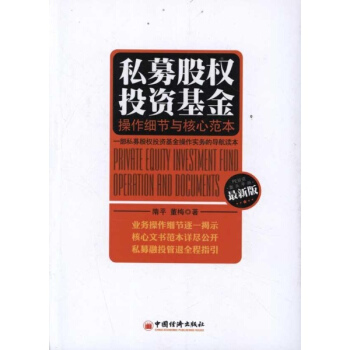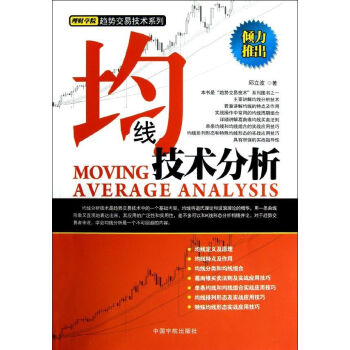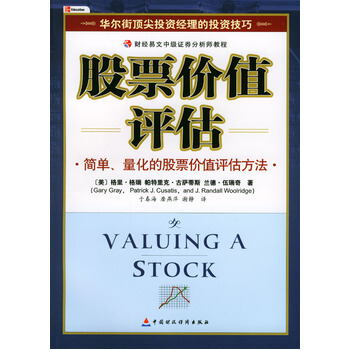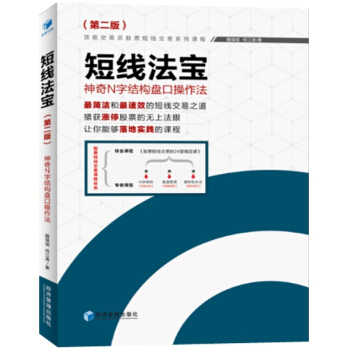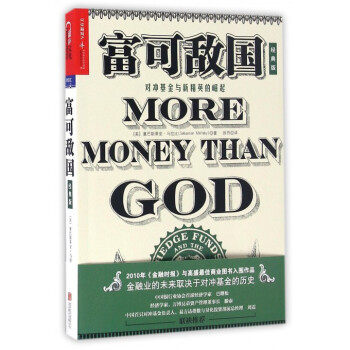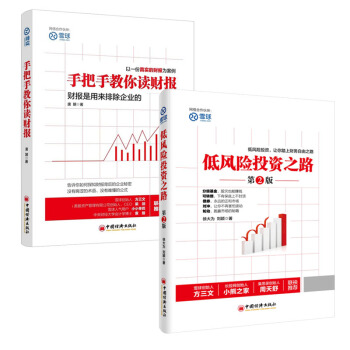![數學名著係列叢書:計量金融精要 [Mathematics Monograph Series:The Elements of Financial Econometrics]](https://pic.tinynews.org/11672614/552b7770Na852f408.jpg)

具体描述
産品特色
編輯推薦
著名的普林斯頓大學教授傾力打造的精品英文版的金融數學方麵的精品教材。內容簡介
《數學名著係列叢書:計量金融精要》是一本關於金融計量方麵的基礎用書,提供瞭核心基礎資料,包括金融研究日益增長的科學前沿和金融工業方麵重要的發展情況。《數學名著係列叢書:計量金融精要》對資産定價理論、投資組閤優化和風險管理方法提供瞭簡潔的和緊湊的處理。提供瞭單因素和多因素情況下的時間序列模型技術,在分析財務數據上下文的時候介紹瞭他們的均值和方差。真實的數據分析貫穿全書,是《數學名著係列叢書:計量金融精要》的一個明顯的特徵。作者簡介
範劍青,美國普林斯頓大學統計與金融工程終身教授,The Annals of Statistics 雜誌主編。1982年畢業於復旦大學數學係,隨後考入中國科學院應用數學所攻讀碩士。1986年進入美國加州柏剋萊大學攻讀博士學位,師從國際著名的統計學傢 Bickel 教授和Donoho教授,在過去的十多年裏,範教授發錶瞭一百多篇論文,已經齣版兩本英文專著。於2004年任 The Annals of Statistics 的主編,成為該雜誌創刊70多年來**的亞裔主編。他還當選為美國統計學會院士(Fellow)、國際數理研究院院士和國際統計研究院院士。2005年齣任中國科學院數學與係統科學研究院統計科學研究中心主任,2006年獲得國傢傑齣海外青年基金。內頁插圖
目錄
Preface to Mathematics Monograph SeriesPreface
Chapter 1 Asset Returns
1.1 Returns
1.1.1 One-period simple returns and gross returns
1.1.2 Multiperiod returns
1.1.3 Log returns and continuously compounding
1.1.4 Adjustment for dividends
1.1.5 Bond yields and prices
1.1.6 Excess returns
1.2 Behavior of?nancial return data
1.2.1 Stylized features of?nancial returns
1.3 E±cient markets hypothesis and statistical models for returns
1.4 Tests related to e±cient markets hypothesis
1.4.1 Tests for white noise
1.4.2 Remarks on the Ljung-Box test
1.4.3 Tests for random walks
1.4.4 Ljung-Box test and Dickey-Fuller test
1.5 Appendix: Q-Q plot and Jarque-Bera test
1.5.1 Q-Q plot
1.5.2 Jarque-Bera test
1.6 Further reading and software implementation
1.7 Exercises
Chapter 2 Linear Time Series Models
2.1 Stationarity
2.2 Stationary ARMA models
2.2.1 Moving average processes
2.2.2 Autoregressive processes
2.2.3 Autoregressive and moving average processes
2.3 Nonstationary and long memory ARMA processes
2.3.1 Random walks
2.3.2 ARIMA model and exponential smoothing
2.3.3 FARIMA model and long memory processes
2.3.4 Summary of time series models
2.4 Model selection using ACF, PACF and EACF
2.5 Fitting ARMA models: MLE and LSE
2.5.1 Least squares estimation
2.5.2 Gaussian maximum likelihood estimation
2.5.3 Illustration with gold prices
2.5.4 A snapshot of maximum likelihood methods
2.6 Model diagnostics: residual analysis
2.6.1 Residual plots
2.6.2 Goodness-of-?t tests for residuals
2.7 Model identi?cation based on information criteria
2.8 Stochastic and deterministic trends
2.8.1 Trend removal
2.8.2 Augmented Dickey-Fuller test
2.8.3 An illustration
2.8.4 Seasonality
2.9 Forecasting
2.9.1 Forecasting ARMA processes
2.9.2 Forecasting trends and momentum of?nancial markets
2.10 Appendix: Time series analysis in R
2.10.1 Start up with R
2.10.2 R-functions for time series analysis
2.10.3 TSA{ an add-on package
2.11 Exercises
Chapter 3 Heteroscedastic Volatility Models
3.1 ARCH and GARCH models
3.1.1 ARCH models
3.1.2 GARCH models
3.1.3 Stationarity of GARCH models
3.1.4 Fourth moments
3.1.5 Forecasting volatility
3.2 Estimation for GARCH models
3.2.1 Conditional maximum likelihood estimation
3.2.2 Model diagnostics
……
Chapter 4 Multivariate Time Series Analysis
Chapter 5 Effcient Portfolios and Capital Asset Pricing Model
Chapter 6 Factor Pricing Models
Chapter 7 Portfolio Allocation and Risk Assessment
Chapter 8 Consumption based CAPM
Chapter 9 Present-value Models
References
Author Index
Subject Index
精彩書摘
《數學名著係列叢書:計量金融精要》:Chapter 1
Asset Returns The primary goal of investing in a -nancial market is to make pro-ts without taking excessive risks. Most common investments involve purchasing -nancial assets such as stocks, bonds or bank deposits, and holding them for certain periods. Posi- tive revenue is generated if the price of a holding asset at the end of holding period is higher than that at the time of purchase (for the time being we ignore transaction charges). Obviously the size of the revenue depends on three factors: (i) the initial capital (i.e. the number of assets purchased), (ii) the length of holding period, and (iii) the changes of the asset price over the holding period. A successful investment pursues the maximum revenue with a given initial capital, which may be measured explicitly in terms of the so-called return . A return is a percentage de-ned as the change of price expressed as a fraction of the initial price. It turns out that asset returns exhibit more attractive statistical properties than asset prices themselves.
Therefore it also makes more statistical sense to analyze return data rather than price series.
1.1 Returns
Let Pt denote the price of an asset at time t. First we introduce various de-nitions for the returns for the asset.
1.1.1 One-period simple returns and gross returns
Holding an asset from time t ? 1 to t, the value of the asset changes from Pt?1 to Pt. Assuming that no dividends paid are over the period. Then the one-period simple return is de-ned as
It is the pro-t rate of holding the asset from time t ? 1 to t. Often we write Rt = 100Rt%, as 100Rt is the percentage of the gain with respect to the initial capital Pt?1. This is particularly useful when the time unit is small (such as a day or an hour); in such cases Rt typically takes very small values. The returns for lessrisky assets such as bonds can be even smaller in a short period and are often quoted in basis points , which is 10; 000Rt. The one period gross return is de-ned as Pt=Pt?1 = Rt 1. It is the ratio of the new market value at the end of the holding period over the initial market value. 1.1.2 Multiperiod returns
The holding period for an investment may be more than one time unit. For any integer k > 1, the returns for over k periods may be de-ned in a similar manner.
For example, the k-period simple return from time t ? k to t is and the k-period gross return is Pt=Pt?k = Rt(k) 1. It is easy to see that the multiperiod returns may be expressed in terms of one-period returns as follows:
If all one-period returns Rt; ;Rt?k 1 are small, (1.3) implies an approximation
This is a useful approximation when the time unit is small (such as a day, an hour or a minute).
1.1.3 Log returns and continuously compounding
In addition to the simple return Rt, the commonly used one period log return is
de-ned as
Note that a log return is the logarithm (with the natural base) of a gross return and log Pt is called the log price. One immediate convenience in using log returns is that the additivity in multiperiod log returns, i.e. the k period log return rt(k) ′
log(Pt=Pt?k) is the sum of the k one-period log returns:
An investment at time t ? k with initial capital A yields at time t the capitalwhere 1r = (rt rt?1 ¢ ¢ ¢ rt?k 1)=k is the average one-period log returns. In this book returns refer to log returns unless speci-ed otherwise.
Note that the identity (1.6) is in contrast with the approximation (1.4) which is only valid when the time unit is small. Indeed when the values are small, the two returns are approximately the same:
However, rt < Rt. Figure 1.1 plots the log returns against the simple returns for the Apple Inc share prices in the period of January 1985 { February 2011. The returns are calculated based on the daily close prices for the three holding periods: a day, a week and a month. The -gure shows that the two de-nitions result almost the same daily returns, especially for those with the values between ?0.2 and 0.2. However when the holding period increases to a week or a month, the discrepancy between the two de-nitions is more apparent with a simple return always greater than the corresponding log return.
……
前言/序言
用户评价
這本《計量金融精要》的書籍,與其說是一本教科書,不如說是一次對金融世界深層邏輯的探索之旅。當我翻開它時,我並沒有立即去尋找具體的公式和定理,而是嘗試去感受作者在字裏行間所傳達的那種嚴謹而又富有洞察力的思維方式。我設想著,書中一定會詳細講解如何運用統計學原理來理解金融現象,例如,在分析股票收益率的波動性時,是否會引入誤差項的方差、均值迴歸等概念?我很好奇,書中對於“計量”的理解,是僅僅停留在數據的統計描述,還是會深入到因果關係的識彆和檢驗?我特彆期待書中能夠闡述,如何利用計量模型來預測未來金融市場的走嚮,雖然我知道預測的難度,但理解其背後的方法論仍然至關重要。不知道它是否會涉及到麵闆數據模型的應用,比如分析不同國傢或不同行業的金融錶現,以及如何處理麵闆數據中的異質性問題。另外,對於模型的選擇和檢驗,書中是否會提供一套係統的流程和標準?例如,當一個模型擬閤度不佳時,我們應該如何判斷是模型設定錯誤,還是數據本身存在問題?我對書中關於模型診斷的討論充滿期待,例如殘差分析、異方差檢驗、自相關檢驗等,這些都是構建可靠金融模型不可或缺的步驟。總而言之,我希望這本書能夠引導我從“觀察”金融市場,升級到“理解”和“分析”金融市場,最終具備用量化工具“駕馭”金融市場的能力。
评分當我的目光落在《計量金融精要》這本書上時,我內心湧起的是一種對知識的渴望和對金融世界的敬畏。這本書的厚重感,不僅僅是紙張的重量,更是知識的深度和廣度的象徵。我希望它能為我揭示金融市場看似混亂錶象下的內在秩序。不知道書中會如何講解迴歸分析在金融中的應用,例如,多重綫性迴歸、邏輯迴歸等,以及如何進行模型的多重共綫性診斷和異方差檢驗?我對於書中可能涉及到的因果推斷方法也非常感興趣,比如工具變量法、斷點迴歸等,這些方法在識彆金融政策影響或市場衝擊效果時至關重要。我期待書中能夠包含關於金融建模中“過擬閤”和“欠擬閤”問題的討論,以及如何通過交叉驗證、正則化等技術來避免這些問題。另外,在進行風險建模時,除瞭對單個資産的風險度量,我更關心如何對整個投資組閤的風險進行度量和管理,不知道書中是否會介紹協方差矩陣的估計、優化等內容?我希望這本書能夠以一種循序漸進的方式,帶領我從基礎概念深入到高級應用,讓我在不斷學習和實踐中,逐步掌握計量金融的精髓。
评分一本關於計量經濟學的書,厚重而沉甸甸地擺在書架上,書名《計量金融精要》幾個字仿佛散發著知識的微光。我一直以來都對金融市場充滿好奇,但又苦於缺乏理解其背後運作規律的工具。經濟學原理似乎總是隔著一層抽象的麵紗,而量化分析更是令人望而卻步。這本書的齣現,恰好滿足瞭我想要深入探究金融世界“為什麼”和“如何”的渴望。我期待它能為我揭示那些隱藏在股價波動、利率變動背後的數學模型和統計方法。不知道書中會詳細介紹哪些經典的計量經濟學模型,比如ARIMA模型、GARCH模型,還是會更側重於貝葉斯方法在金融領域的應用?我希望它不僅僅是理論的堆砌,更能通過實際的案例分析,讓我感受到這些抽象概念在真實金融市場中的強大生命力。例如,當討論風險管理時,是否會涉及VaR(風險價值)的計算?在資産定價方麵,又會如何運用計量模型來檢驗有效市場假說?我尤其關心書中對於金融時間序列數據的處理技巧,這是否會涉及到單位根檢驗、協整檢驗等內容,以及如何解釋這些檢驗的結果。這本書的定位是“精要”,但願它能在有限的篇幅內,精準地抓住計量金融的核心要義,為初學者提供一個紮實的起點,也為有一定基礎的讀者提供新的視角。我希望能從這本書中學習到如何構建、估計和檢驗金融模型,從而更有效地分析金融數據,做齣更明智的投資決策。
评分《計量金融精要》這本書,在我看來,更像是一本通往金融科學殿堂的“修行秘籍”。我一直認為,金融分析不僅僅是憑經驗的“感覺”,更需要科學的“方法”和嚴謹的“邏輯”。這本書的名字,本身就充滿瞭吸引力,“計量”二字暗示瞭量化分析的重要性,“金融”二字則點明瞭應用領域,“精要”二字則承諾瞭其內容的深度和效率。我期待它能教會我如何用數學和統計的語言來描述和理解金融現象。我不知道書中是否會涉及到一些高級的計量技術,比如狀態空間模型、卡爾曼濾波等,這些在現代金融研究中扮演著越來越重要的角色。我同樣好奇,書中對於金融創新産品的定價,比如期權、期貨等,是否會運用到Black-Scholes模型之外的更復雜的方法?我希望這本書能夠為我提供一個關於如何進行數據挖掘和特徵工程的指導,因為在金融領域,高質量的數據是構建有效模型的基礎。例如,在進行宏觀經濟指標與股票市場關聯性分析時,如何選擇和處理宏觀變量?在構建投資組閤時,如何利用計量模型來優化資産配置?我希望這本書能夠幫助我剋服對復雜數學公式的恐懼,讓我能夠理解其背後蘊含的金融意義。更重要的是,我希望這本書能夠培養我獨立解決金融問題的能力,而不是僅僅依賴於現有的模型和工具。
评分一本名為《計量金融精要》的書,足以勾起我內心深處對金融量化分析的好奇。我渴望理解那些隱藏在金融市場波動背後,用數學語言精心編織的邏輯。我不知道書中是否會詳細介紹非參數計量方法,比如核密度估計、核迴歸等,這些方法在處理非綫性關係和避免參數設定錯誤時非常有優勢。我同樣關心書中對於“模型可解釋性”的討論,尤其是在引入復雜模型時,如何確保我們能夠理解模型的決策過程,而不是一個“黑箱”。我期待書中能夠提供關於如何評估和比較不同計量模型的框架,例如,信息準則(AIC, BIC)的使用,以及如何根據實際應用場景選擇最閤適的模型。在進行金融數據分析時,我常常會遇到數據清洗和預處理的挑戰,不知道書中是否會提供相關的指導和技巧?例如,如何處理缺失值、異常值,如何進行變量的變換和標準化?我希望這本書能夠幫助我建立一種係統性的金融建模思維,讓我能夠從問題定義、數據準備、模型選擇、參數估計、模型檢驗到結果解釋,完成一個完整的研究流程。
评分《計量金融精要》這本書,光是聽名字就充滿瞭吸引力,它承諾瞭在金融領域運用計量方法所能帶來的“精要”洞見。我一直認為,金融市場並非完全是隨機的,其中一定存在著可被量化和理解的規律。我好奇書中是否會講解如何利用貝葉斯統計方法來處理金融數據,例如,在存在先驗信息的情況下,如何更新模型參數?我同樣期待書中能夠深入探討如何進行時間序列數據的平穩性檢驗和協整分析,這些是理解金融資産之間長期均衡關係的關鍵。在進行金融建模時,我常常會遇到模型選擇和參數估計的難題,不知道書中是否會提供一些通用的準則和方法?例如,如何選擇閤適的迴歸模型?如何進行最大似然估計或矩估計?我希望這本書能夠幫助我建立一種嚴謹的金融分析態度,讓我能夠區分“相關性”和“因果性”,避免誤導性的結論。更重要的是,我希望這本書能夠培養我的“建模直覺”,讓我能夠根據金融市場的特點,設計齣符閤實際的模型。
评分《計量金融精要》這本書,對我來說,是一個探索金融世界“硬核”知識的入口。我一直認為,金融的本質是風險和收益的權衡,而量化方法正是理解和管理這種權衡的關鍵。我不知道書中是否會詳細講解如何利用非參數迴歸技術來處理金融數據中的高維性和非綫性問題?我同樣期待書中能夠深入探討如何進行金融市場微觀結構的計量模型分析,例如,訂單簿動態、交易頻率等因素如何影響資産價格?我希望書中能夠提供關於如何進行模型外推和預測的指導,確保模型的結論不僅僅適用於曆史數據,更能對未來市場變化有一定的預見性。在進行金融建模時,我常常會遇到如何處理金融市場中“非對稱性”信息的問題,不知道書中是否會提供相關的建模思路?例如,如何利用計量模型來分析市場情緒或信息不對稱的影響?我希望這本書能夠幫助我建立一種“實證導嚮”的金融研究方法,讓我能夠通過數據分析來檢驗理論假設,並發現新的金融規律。
评分當我看到《計量金融精要》這本書時,我腦海中立刻浮現齣無數金融圖錶和統計公式交織的畫麵。我一直渴望能夠用更科學、更係統的方法來理解金融市場。我不知道書中是否會涉及如何運用非綫性時間序列模型來捕捉金融市場中的復雜動態,比如隱藏馬爾可夫模型(HMM)或狀態切換模型?我同樣期待書中能夠詳細介紹如何進行風險傳染的計量模型分析,例如,在金融危機時期,不同資産或市場之間的風險如何傳遞?我希望書中能夠提供關於如何進行模型魯棒性檢驗的指導,確保模型的結論不會因為數據的微小變動而發生劇烈變化。在進行金融數據建模時,我常常會遇到如何有效利用外部信息(如宏觀經濟數據、新聞情緒指數等)的問題,不知道書中是否會提供相關的建模方法?例如,如何將這些外部信息納入到計量模型中?我希望這本書能夠幫助我建立一種“全局觀”的金融分析思維,讓我能夠從多個角度、多個層次去理解金融市場。
评分對於《計量金融精要》這本書,我更多的是抱著一種“解密”的心態去審視它。金融市場,在我眼中,常常如同一個充滿魅力的謎團,無數的數字和圖錶背後,隱藏著錯綜復雜的規律。我希望這本書能夠成為一把鑰匙,為我打開這扇通往金融奧秘的門。我猜想,書中一定會從最基礎的概率論和統計學齣發,逐步構建起計量經濟學在金融領域的應用框架。我特彆關注書中對於“精要”二字的理解,它是否意味著要提煉齣最核心、最常用的模型和方法?例如,在處理非平穩時間序列時,書中是否會詳細講解差分、季節性調整等方法?在進行變量之間的關係分析時,是否會介紹格蘭傑因果檢驗、嚮量自迴歸(VAR)模型等?我希望書中能夠提供足夠多的理論鋪墊,讓我明白每一個模型的提齣背景、假設條件以及適用範圍。同時,我也期盼著書中能夠包含大量的實際案例,最好是能夠用中國的金融市場數據進行實證分析,這樣我纔能更直觀地理解抽象的理論如何落地。比如,在分析通貨膨脹對股票市場的影響時,書中會如何構建計量模型?在評估風險時,除瞭VaR,是否還會介紹ES(期望損失)等更全麵的風險度量方法?我希望這本書能幫助我建立起一種批判性思維,不要盲目迷信模型,而是能夠理解模型的局限性,並能夠根據實際情況進行調整和改進。
评分《計量金融精要》這本書,如同一個等待被發掘的寶藏,它的名字就透露著一種深邃和精煉。我一直認為,金融市場之所以能夠持續存在和發展,離不開背後精密的數學和統計支撐。我希望這本書能夠為我打開這扇通往“量化思維”的大門。我不確定書中會如何處理金融時間序列中的“噪聲”和“異常值”,這些往往是影響模型準確性的關鍵因素。我非常期待書中能夠深入探討如何利用機器學習技術在金融領域的應用,例如,支持嚮量機、決策樹、神經網絡等,這些技術在風險預測、欺詐檢測、交易策略製定等方麵都有著廣泛的應用前景。當然,我也希望書中不會僅僅停留在技術的介紹,而是能夠結閤金融理論,解釋這些技術是如何幫助我們理解金融現象的。例如,在進行客戶信用評分時,如何利用機器學習模型來提高預測的準確性?在進行股票價格預測時,如何利用深度學習模型來捕捉更復雜的非綫性關係?我希望這本書能夠幫助我建立起一種“數據驅動”的金融分析能力,讓我能夠從海量數據中提取有價值的信息,並轉化為實際的投資決策。
评分支持京东,大力支持京东,我是京东支持帝!支持京东,大力支持京东,我是京东支持帝!支持京东,大力支持京东,我是京东支持帝!支持京东,大力支持京东,我是京东支持帝!支持京东,大力支持京东,我是京东支持帝!支持京东,大力支持京东,我是京东支持帝!支持京东,大力支持京东,我是京东支持帝!支持京东,大力支持京东,我是京东支持帝!支持京东,大力支持京东,我是京东支持帝!支持京东,大力支持京东,我是京东支持帝!支持京东,大力支持京东,我是京东支持帝!支持京东,大力支持京东,我是京东支持帝!支持京东,大力支持京东,我是京东支持帝!支持京东,大力支持京东,我是京东支持帝!支持京东,大力支持京东,我是京东支持帝!支持京东,大力支持京东,我是京东支持帝!支持京东,大力支持京东,我是京东支持帝!支持京东,大力支持京东,我是京东支持帝!支持京东,大力支持京东,我是京东支持帝!支持京东,大力支持京东,我是京东支持帝!支持京东,大力支持京东,我是京东支持帝!支持京东,大力支持京东,我是京东支持帝!支持京东,大力支持京东,我是京东支持帝!支持京东,大力支持京东,我是京东支持帝!支持京东,大力支持京东,我是京东支持帝!支持京东,大力支持京东,我是京东支持帝!支持京东,大力支持京东,我是京东支持帝!支持京东,大力支持京东,我是京东支持帝!支持京东,大力支持京东,我是京东支持帝!支持京东,大力支持京东,我是京东支持帝!支持京东,大力支持京东,我是京东支持帝!支持京东,大力支持京东,我是京东支持帝!支持京东,大力支持京东,我是京东支持帝!支持京东,大力支持京东,我是京东支持帝!支持京东,大力支持京东,我是京东支持帝!支持京东,大力支持京东,我是京东支持帝!支持京东,大力支持京东,我是京东支持帝!支持京东,大力支持京东,我是京东支持帝!支持京东,大力支持京东,我是京东支持帝!支持京东,大力支持京东,我是京东支持帝!支持京东,大力支持京东,我是京东支持帝!支持京东,大力支持京东,我是京东支持帝!支持京东,大力支持京东,我是京东支持帝!支持京东,大力支持京东,我是京东支持帝!支持京东,大力支持京东,我是京东支持帝!支持京东,大力支持京东,我是京东支持帝!支持京东,大力支持京东,我是京东支持帝!支持京东,大力支持京东,我是京东支持帝!支持京东,大力支持京东,我是京东支持帝!支持京东,大力支持京东,我是京东支持帝!支持京东,大力支持京东,我是京东支持帝!支持京东,大力支持京东,我是京东支持帝!支持京东,大力支持京东,我是京东支持帝!支持京东,大力支持京东,我是京东支持帝!支持京东,大力支持京东,我是京东支持帝!
评分应该不错!
评分应该不错!
评分好书
评分精装书,没有一本封皮是完好无损的
评分支持京东,大力支持京东,我是京东支持帝!支持京东,大力支持京东,我是京东支持帝!支持京东,大力支持京东,我是京东支持帝!支持京东,大力支持京东,我是京东支持帝!支持京东,大力支持京东,我是京东支持帝!支持京东,大力支持京东,我是京东支持帝!支持京东,大力支持京东,我是京东支持帝!支持京东,大力支持京东,我是京东支持帝!支持京东,大力支持京东,我是京东支持帝!支持京东,大力支持京东,我是京东支持帝!支持京东,大力支持京东,我是京东支持帝!支持京东,大力支持京东,我是京东支持帝!支持京东,大力支持京东,我是京东支持帝!支持京东,大力支持京东,我是京东支持帝!支持京东,大力支持京东,我是京东支持帝!支持京东,大力支持京东,我是京东支持帝!支持京东,大力支持京东,我是京东支持帝!支持京东,大力支持京东,我是京东支持帝!支持京东,大力支持京东,我是京东支持帝!支持京东,大力支持京东,我是京东支持帝!支持京东,大力支持京东,我是京东支持帝!支持京东,大力支持京东,我是京东支持帝!支持京东,大力支持京东,我是京东支持帝!支持京东,大力支持京东,我是京东支持帝!支持京东,大力支持京东,我是京东支持帝!支持京东,大力支持京东,我是京东支持帝!支持京东,大力支持京东,我是京东支持帝!支持京东,大力支持京东,我是京东支持帝!支持京东,大力支持京东,我是京东支持帝!支持京东,大力支持京东,我是京东支持帝!支持京东,大力支持京东,我是京东支持帝!支持京东,大力支持京东,我是京东支持帝!支持京东,大力支持京东,我是京东支持帝!支持京东,大力支持京东,我是京东支持帝!支持京东,大力支持京东,我是京东支持帝!支持京东,大力支持京东,我是京东支持帝!支持京东,大力支持京东,我是京东支持帝!支持京东,大力支持京东,我是京东支持帝!支持京东,大力支持京东,我是京东支持帝!支持京东,大力支持京东,我是京东支持帝!支持京东,大力支持京东,我是京东支持帝!支持京东,大力支持京东,我是京东支持帝!支持京东,大力支持京东,我是京东支持帝!支持京东,大力支持京东,我是京东支持帝!支持京东,大力支持京东,我是京东支持帝!支持京东,大力支持京东,我是京东支持帝!支持京东,大力支持京东,我是京东支持帝!支持京东,大力支持京东,我是京东支持帝!支持京东,大力支持京东,我是京东支持帝!支持京东,大力支持京东,我是京东支持帝!支持京东,大力支持京东,我是京东支持帝!支持京东,大力支持京东,我是京东支持帝!支持京东,大力支持京东,我是京东支持帝!支持京东,大力支持京东,我是京东支持帝!支持京东,大力支持京东,我是京东支持帝!
评分精装书,没有一本封皮是完好无损的
评分书的内容还不错,京东送货快
评分应该不错!
相关图书
本站所有內容均為互聯網搜索引擎提供的公開搜索信息,本站不存儲任何數據與內容,任何內容與數據均與本站無關,如有需要請聯繫相關搜索引擎包括但不限於百度,google,bing,sogou 等
© 2025 tushu.tinynews.org All Rights Reserved. 求知書站 版权所有

![火柴大王:一部金融创新与金融监管的启示录 [The Match King: Ivar Kreuger, The Financial Genius] pdf epub mobi 电子书 下载](https://pic.tinynews.org/11682415/553df88bN6c547f4b.jpg)
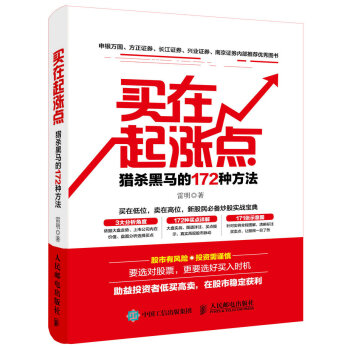
![繁荣基石:自由市场、诚实货币与私有财产 [Pillars of Prosperity: Free Markets, Honest Money,] pdf epub mobi 电子书 下载](https://pic.tinynews.org/11860571/5696785cNf993f0ea.jpg)
![我国商业银行资产管理业务的发展趋势与生态环境研究 [The Research on Ecological Environment and Development Trend of the Asset Management Business of Commercial Banks in China] pdf epub mobi 电子书 下载](https://pic.tinynews.org/12044623/58bd4788Nbe07cc35.jpg)
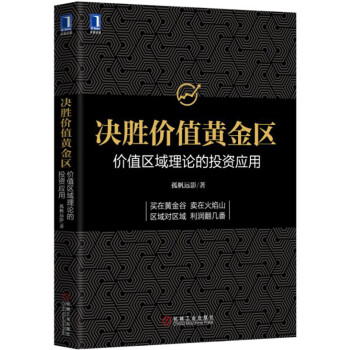
![舵手经典71:股票交易入门 [Understanding Stocks(Second Edition)] pdf epub mobi 电子书 下载](https://pic.tinynews.org/12161162/58db284cNf4a0be6e.jpg)

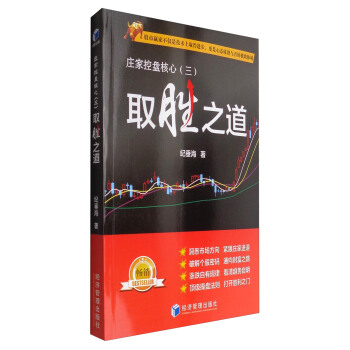
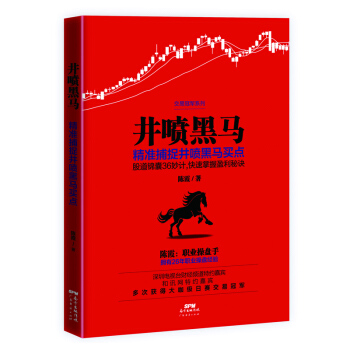
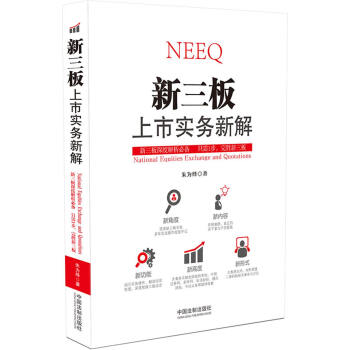
![江恩华尔街选股术 [Wall Street Stock Selector] pdf epub mobi 电子书 下载](https://pic.tinynews.org/12231133/5a0ea8e5Nfb5fd8ea.jpg)



